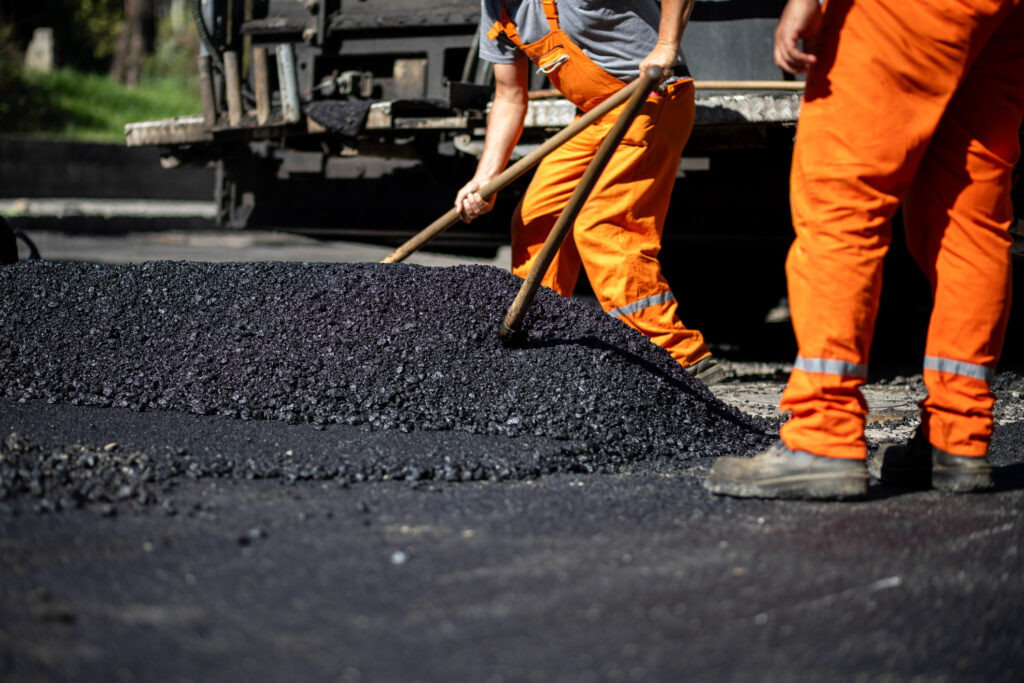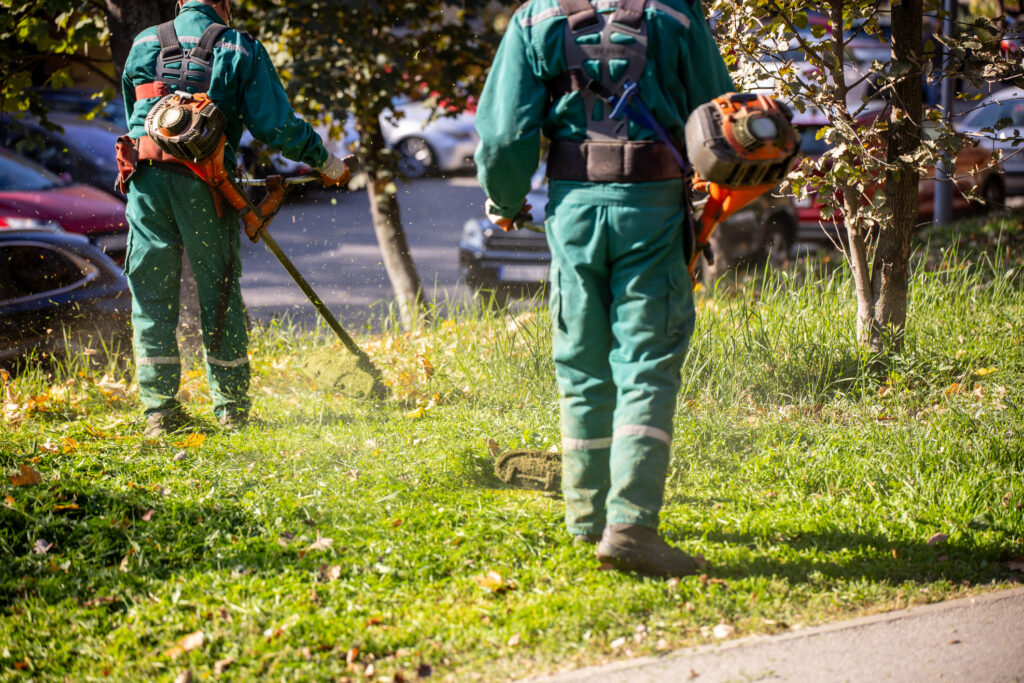Summer in New England. For those of us with crews working in shops, on worksites, or maintaining our region’s infrastructure, this season presents a profound challenge. As an employer, your legal and ethical duty to provide a safe working environment is never more critical than during a heatwave. This guide is designed to provide practical, actionable workplace heat safety tips to protect your most valuable asset—your people—from the dual threats of extreme heat and poor air quality.
Understanding the Dual Threat of Summer
It’s not enough to tell your crew to “be careful out there.” As leaders, we need to understand precisely what they’re up against.
Heat Stress & When the Body’s Cooling System Fails
The human body is remarkable, but it has its limits. We cool ourselves primarily through sweating, but when high heat is combined with the oppressive humidity common in a New England summer, sweat can’t evaporate effectively. This is when the body’s internal temperature can rise to dangerous levels, leading to a variety of heat-related illnesses.
- Heat Exhaustion: This is the body’s warning signal that it’s becoming overwhelmed. According to the
Centers for Disease Control and Prevention (CDC) - Heat Stroke: The sweating mechanism fails, and the body’s temperature can rise to 106°F or higher within minutes. Symptoms include a high body temperature, hot, red, dry, or damp skin, a fast and strong pulse, headache, confusion, and potential loss of consciousness. Immediate medical attention is required.
Understanding these differences is crucial for providing the right response, and a core tenet of any list of workplace heat safety tips is recognizing the early signs of trouble.
The Air We Breathe: Summer Haze & Particulate Matter
That familiar summer haze isn’t just a picturesque filter on the horizon. It’s often a cocktail of airborne pollutants that pose a significant health risk.
When your crew inhales these particulates, it can cause respiratory irritation, coughing, shortness of breath, and fatigue. For workers with pre-existing conditions like asthma, the risk is even greater. This respiratory stress compounds the physical stress from the heat, leading to faster exhaustion and an increased likelihood of accidents or heat-related illness.
Your Comprehensive Safety Checklist for Today’s Conditions
Reacting to an emergency is one thing; preventing it is another. A proactive safety plan is the most effective tool in your arsenal. Here are essential workplace heat safety tips to implement immediately.
The Foundation: Hydration, Acclimatization, and Breaks
This is the non-negotiable bedrock of summer safety.
- Aggressive Hydration
- Smart Scheduling
- Acclimatization
Gear Up for Safety: Your Uniform as a First Line of Defense
For too long, uniforms were seen simply as clothing. Today, we must view them as essential pieces of Personal Protective Equipment (PPE). The right garment can be the difference between a productive day and a dangerous one.
- The Science of Fabric: Traditional cotton absorbs sweat, becoming heavy, wet, and restrictive, which actually traps heat against the body. Modern summer industrial uniforms utilize advanced, moisture-wicking polyester blends. These fabrics use capillary action to pull sweat from the skin to the surface of the garment, where it can evaporate rapidly, enhancing the body’s natural cooling process. This single technological advancement is one of the most important workplace heat safety tips when it comes to apparel.
- Color, Weight, and Fit: The physics are simple. Lighter colors like tan, light gray, or blue reflect solar radiation, while dark colors absorb it. Choosing lighter-colored uniforms can measurably reduce heat load. Furthermore, lightweight fabrics and a slightly looser fit promote critical airflow over the skin’s surface.
- Clarity in the Haze: Summer haze, glare, and long shadows can dramatically reduce visibility on a busy worksite. Equipping your team with ANSI-compliant high-visibility apparel from our
industrial uniform program
The Hidden Hazard: What’s Left on Your Uniforms After the Shift
The day’s work isn’t truly over when your crew clocks out. Their uniforms carry a hidden load of sweat, bacteria, industrial soils, and the airborne particulates they were exposed to all day. Addressing this is a critical, yet often overlooked, safety measure.
The Limitations of Home Washing
Sending a heavily soiled, sweat-soaked industrial uniform through a residential washing machine is a losing battle.
- Ineffective on Industrial Grime: Home detergents aren’t formulated to break down the grease, oil, and specialized soils found in an
automotive shop - Bacteria and Odor: The lower temperatures of home washing are often insufficient to kill the bacteria and fungi that thrive in damp, sweaty fabric, leading to persistent odors and potential skin irritation.
- Degradation of Safety Features: Most importantly, improper washing with softeners or harsh chemicals can destroy the flame-resistant properties or strip the retroreflective qualities from high-visibility tape, rendering safety garments useless.
The Professional Laundering Advantage
This is where a uniform rental program proves its immense value. Our professional laundering service is a precise, industrial process. We use specifically formulated detergents and exact water temperatures to target specific soils, from automotive grease to organic matter. We ensure that every garment is not just visibly clean, but hygienically clean, while using processes that are designed to protect and preserve the integrity of the fabric and its safety features. This isn’t just cleaning; it’s a crucial final step in your safety protocol.
A Cleaner Workspace is a Safer Workspace
The safety of your environment extends indoors. The same dust, pollen, and pollutants swirling in the summer air get tracked into your facility on the bottom of work boots. A busy shop floor can become a source of airborne dust, further impacting indoor air quality.
A robust floor mat rental program is an effective and simple solution. A high-quality scraper mat placed outside an entrance can remove the heaviest debris, while a professionally serviced absorbent mat inside can trap an incredible amount of fine dust and moisture. By having our
Your Commitment to a Proactive Safety Culture
You cannot control the forecast for tomorrow, but you absolutely can control your team’s preparedness today. Implementing these workplace heat safety tips is not an expense; it is a fundamental investment in your people’s well-being, your company’s productivity, and your reputation as a responsible employer.
Creating a culture of safety means looking at every angle—from scheduling and hydration to the very fabrics your team wears and the process used to clean them. It requires a proactive mindset and a partnership with a provider who understands these challenges intimately. At New England Uniform, we don’t just supply products; we provide systems and services designed to support your safety goals.
Don’t wait for an incident to review your protocols. Take a look at your team and your environment today. Are they truly equipped to handle the demands of this New England summer?
For a comprehensive “Summer Safety & Uniform Assessment” for your business,




